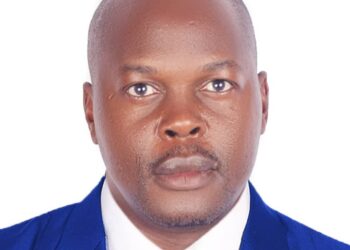There are two issues about UPDF’s current deployment in DRC: the military attack on ADF camps (which is a short term event) and the deployment (which is going to be a long term process). Each of these issues raises questions.
Let me begin with the event: the issue is the fire power used. It was/is overwhelming – sukhoi planes, long range artillery etc. It felt like an attack on a conventional enemy, like a state attacking another state, not a rebel group.
Perhaps we should know from UPDF what is the combat size and equipment capabilities of the ADF? Is their army so large and their equipment that sophisticated to demand such a show of force? Or was UPDF using a hammer to kill a fly?
As far as I know ADF are are light infantry fighting force. How much force do u need to soften them before launching a ground infantry attack to mop them up? Do u really need the kind of artillery and air power we witnessed?
It seems to me that UPDF was not just fighting ADF but actually doing military drills to test the effectiveness of its troops and that destructive capability of its equipment.
If this is so, it has two implications: are we sending a message to potential adversaries of our military capabilities so as to act as a deterrence in case they think of fighting us? In the current circumstances, the most likely adversary is Rwanda. What will be Kigali’s attitude? Won’t this increase the arms race in the region?
But most critically, what are the implications of our stay in Congo. For we must remember the law of unintended consequences.
First what is the main goal of UPDF’s mission? How do we measure success? What are the key success indicators that UPDF is looking at, so that when achieved, it will pull out? And what is the timeline? Without clear answers to these questions UPDF risks mission creep. And here is why.
So this leads the critical issue that will define this mission. Congo is a mess, riddled with many armed groups and conflicts between and among the different ethnic groups there. ADF is one of many rebel groups in Ituri province, where UPDF has deployed. There are about 40 of them. If we add north and south Kivu, they can even be 200. Then there are the Hema versus the Lendu, the Gerere versus the Balega et .
How will UPDF avoid getting sucked into these conflicts? And if it does, which it inevitably will, what will be the implications of that? Won’t that change the nature of the mission? What is Uganda’s towards these risks?
Third, DRC is vast in riches – gold, coltan, diamonds, copper, cobalt, and timber. There are multinational companies, DRC officials (both national and local) and then local businessmen. All these have interests and agendas that keep them in perpetual conflict. How will UPDF avoid being sucked into these conflicts especially given that the actors here will have money to lure UPDF officers to take sides?
Fourth is the Rwanda factor. Kigali believes Kampala wants regime change in Kigali. It also believes that Kampala is training and arming Kigali’s enemies inside DRC. So when UPDF deploys in DRC, what will he the attitude of Kigali? If it sees our deployment as a threat to its security, what is it likely to do and what will be our response?
Given that Kigali claims DRC harbors rebels hostile to it and supported by uganda, will it not ask Kinshasa to allow it deploy as well. If that happens, how shall we define our spheres of interest to avoid what happened in 1999 and 2000? Isn’t there a likelihood that we may encounter Rwanda is Congo, and fight them?
Even if Rwanda does not officially deploy in DRC, will it watch UPDF presence idly? Or will it mount operations to disorganize, disrupt and sabotage UPDF activities? If it does and I think it will, how will such actions be localized to stop escalation into a full blown war between the two countries?
I hope those who planned the deployment considered these factors and put in place mitigation measures to reduce the risk of escalation and mission creep.
Do you have a story in your community or an opinion to share with us: Email us at editorial@watchdoguganda.com













